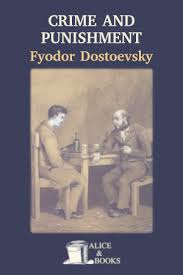The Revolutionary Impact of Digital Accessibility
In the modern era of digital literature, Fyodor Dostoevsky’s masterpiece “Crime and Punishment” has found renewed significance through PDF distribution. The widespread availability of this psychological thriller has transformed how readers worldwide engage with its profound moral questions. Furthermore, the digital format has eliminated geographical barriers, allowing students and literature enthusiasts to delve into Raskolnikov’s tormented psyche. Subsequently, the accessibility of PDF versions has sparked countless online discussions about the novel’s timeless themes and relevance.
The Digital Revolution Meets Literary Excellence
Modern readers accessing “Crime and Punishment” through PDF formats experience the narrative’s intensity in uniquely contemporary ways. The convenience of digital annotation tools enables scholars to meticulously analyze Dostoevsky’s intricate exploration of guilt and redemption. Additionally, the searchable nature of PDF documents allows readers to track recurring motifs throughout this complex psychological narrative. Consequently, the digital format has revolutionized how students and researchers approach this nineteenth-century masterpiece’s deeper philosophical implications.
Psychological Depth in the Palm of Your Hand
The portability of PDF versions brings Raskolnikov’s psychological journey into sharp focus for contemporary readers seeking profound insights. Through digital highlighting and note-taking features, readers can better understand the protagonist’s complex motivations and moral struggles. Meanwhile, the ability to adjust text size and formatting makes the dense philosophical discussions more approachable for modern audiences. Therefore, the PDF format has made this challenging literary work more accessible to diverse readers worldwide.
Social Commentary in the Digital Sphere
Dostoevsky’s critique of nineteenth-century Russian society resonates differently when viewed through our modern technological lens of accessibility. The PDF format allows readers to easily share passages that parallel contemporary social issues and moral dilemmas. Moreover, digital reading groups can simultaneously discuss the novel’s themes across different time zones and cultural contexts. Consequently, the digitization of this classic work has created new opportunities for global literary discourse and analysis.
The Universal Experience of Moral Conflict
The availability of “Crime and Punishment” in PDF format has highlighted the universality of its themes across cultures. Readers from various backgrounds can now easily access Dostoevsky’s profound exploration of conscience and moral responsibility. Furthermore, the digital format enables rapid translation updates, making the text more accurate and culturally relevant. Therefore, the PDF version has helped bridge cultural gaps in understanding this complex narrative’s moral implications.
Character Analysis in the Digital Age
Modern readers approaching the novel through PDFs can better track character development through convenient search and annotation features. The ability to quickly reference earlier scenes helps readers understand the intricate relationships between various characters. Additionally, digital formats allow readers to create detailed character maps and relationship diagrams with ease. Subsequently, this technological advantage has enhanced readers’ comprehension of the novel’s complex character interactions.
Themes of Redemption in Contemporary Context
The digital accessibility of “Crime and Punishment” has sparked new discussions about redemption in our modern moral landscape. Readers can easily highlight and compare passages dealing with guilt, confession, and the possibility of spiritual renewal. Moreover, the PDF format enables readers to share powerful quotations about redemption across social media platforms. Consequently, these technological capabilities have renewed interest in the novel’s spiritual and philosophical dimensions.
The Impact on Academic Study
The availability of searchable PDF versions has revolutionized how academics and students approach this literary masterpiece’s study. Researchers can quickly locate specific passages and themes, making comparative analysis more efficient and thorough than ever. Furthermore, digital annotations can be easily shared among study groups, creating collaborative learning environments across geographical boundaries. Therefore, the PDF format has significantly enhanced the academic study of this profound literary work.
Conclusion:
The transformation of “Crime and Punishment” into PDF format represents more than just technological progress in literary accessibility. This digital evolution has created new opportunities for readers to engage with Dostoevsky’s timeless exploration of morality. Moreover, the PDF format has enabled global discussions about the novel’s themes in ways previously unimaginable. Ultimately, the digitization of this classic work ensures its continued relevance and impact on future generations.
Through this technological advancement, Dostoevsky’s masterpiece continues to challenge and inspire readers in the twenty-first century. The accessibility provided by PDF formats has created new pathways for understanding this complex work’s moral implications. Furthermore, the digital revolution has ensured that the novel’s profound insights into human nature remain relevant. Therefore, “Crime and Punishment” in PDF format stands as a testament to literature’s enduring power.
